Pop-ups are a double-edged sword; some like them, others hate them, some find them useful, and others find them irritating. With that being said, we can’t deny the fact that some websites have some useful content being displayed through these pop-ups.
Pop-ups are usually windows you are redirected to or automatically open up while you are browsing a website. Many sites, especially online shopping sites use this feature to engage and gain their audience’s attention. Whether you like them or are trying to get rid of them, this post will help you achieve your goal. We’ll discover how to disable the pop-up blocker on macOS across Safari, Edge, and Chrome browsers. You can also block or allow pop-ups on some specific websites only, allowing you to disable the pop-up blocker for some websites while keeping it enabled for others.
Disable the Pop-up blocker in Google Chrome on Mac
Google Chrome is the most popular browser on this planet. The browser not only allows you to disable the pop-up blocker but also block or enable pop-ups for specific sites. In the upcoming section, we will learn how to customize your pop-up blocker settings on Google Chrome.
First, launch the Google Chrome browser from your Launchpad.
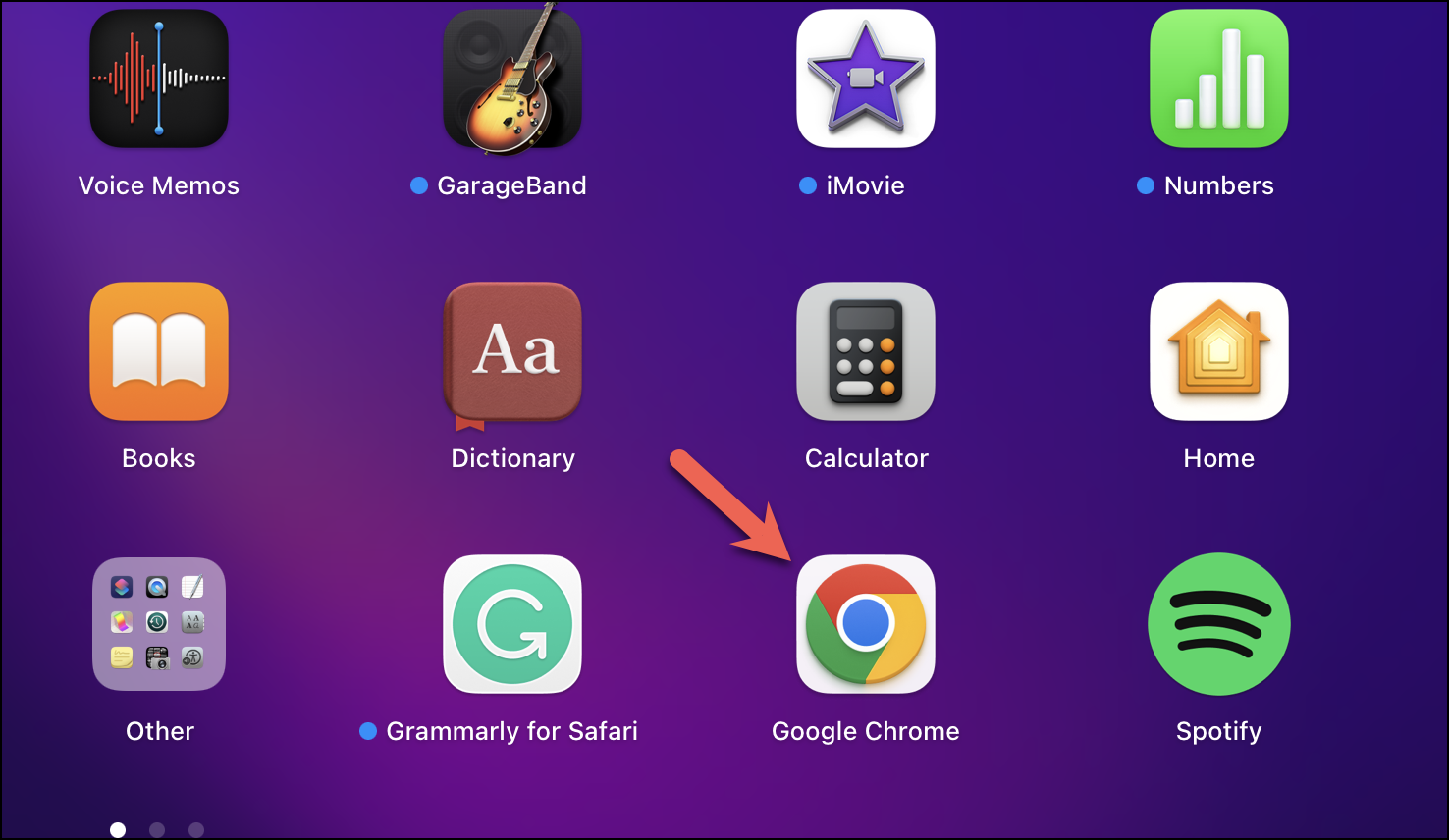
Next, click on the kebab menu which appears as the three vertical dots at the top right of your browser window.
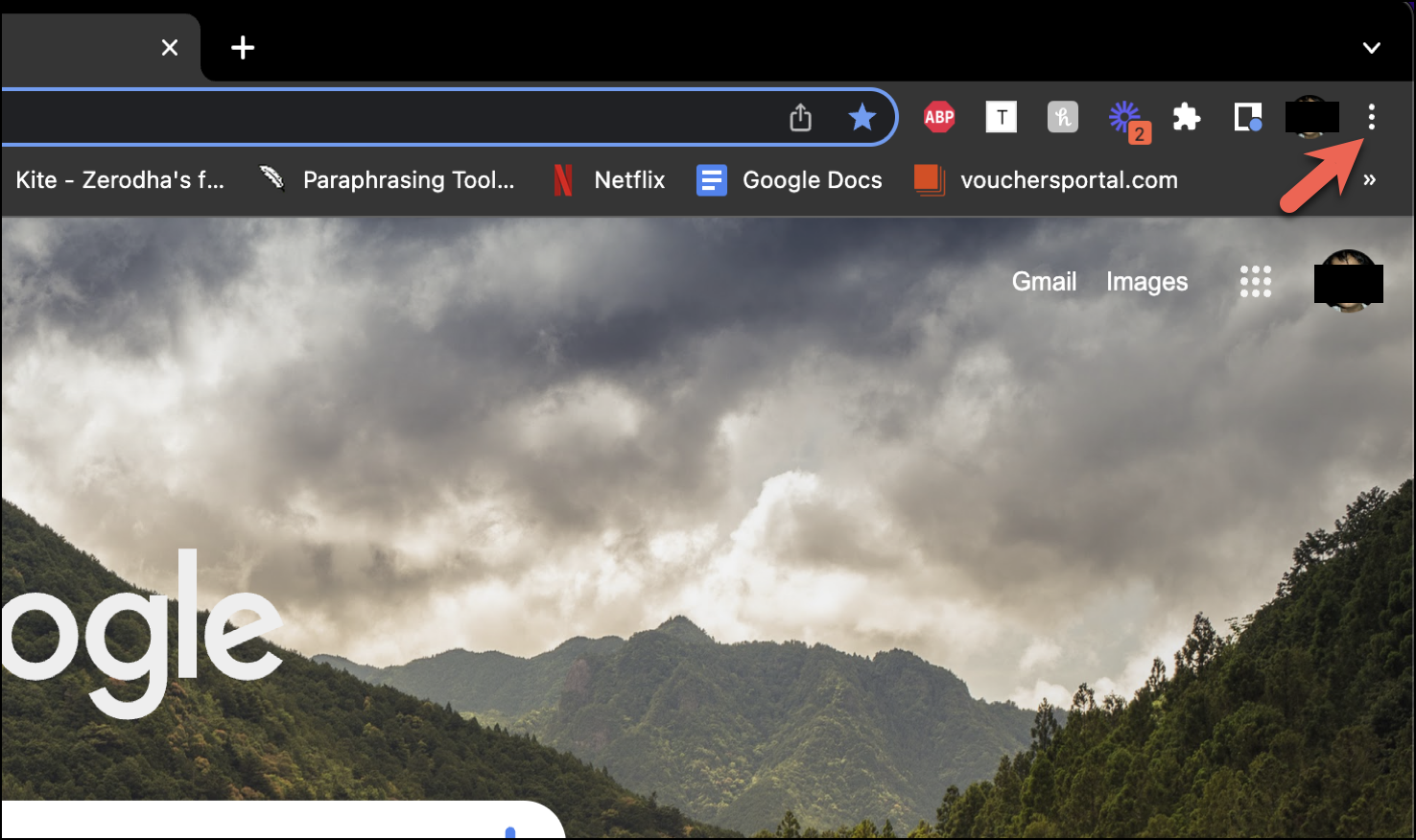
Now, click on ‘Settings’ from the menu.
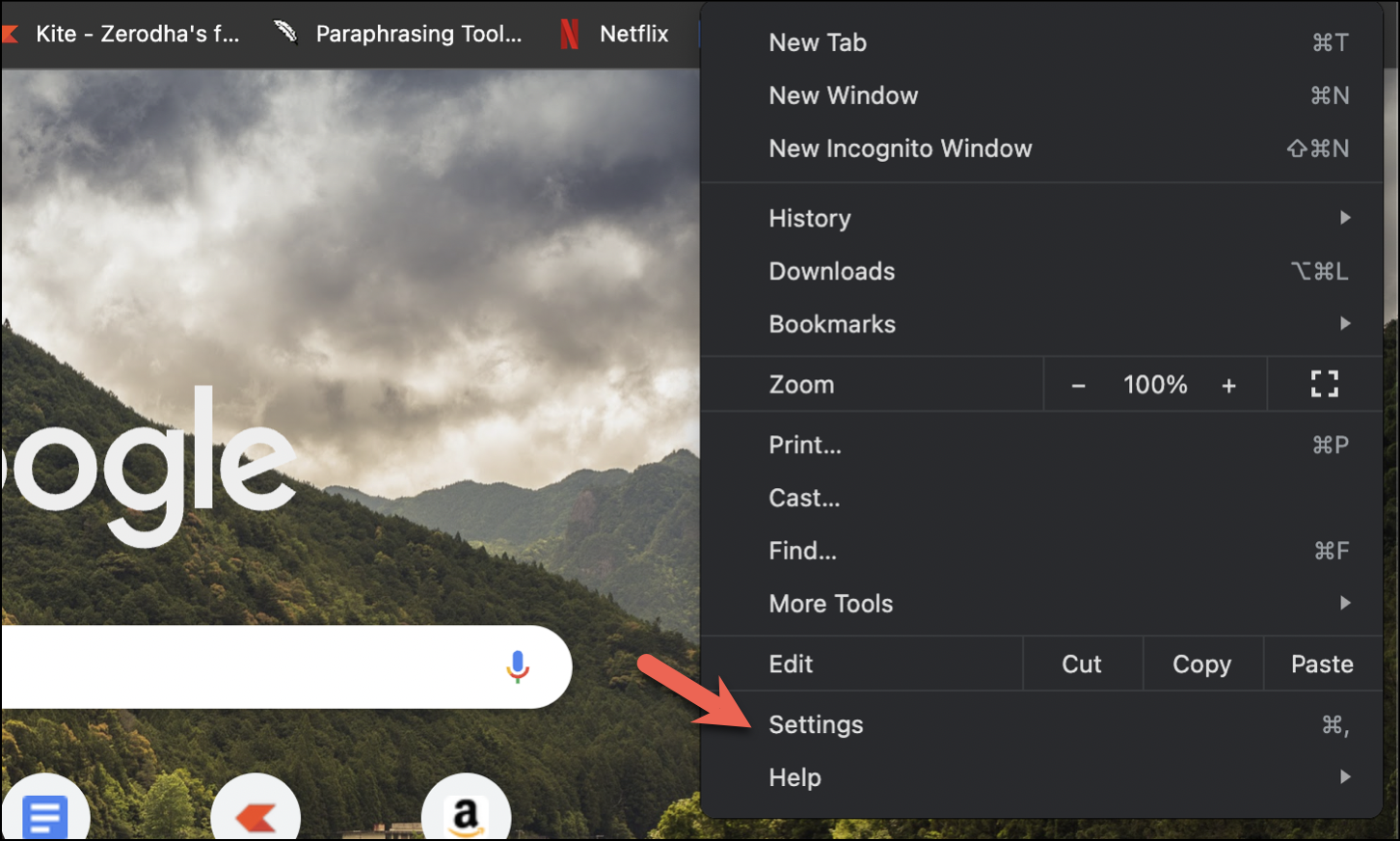
You would be directed to the settings page. Locate the ‘Privacy and security’ option in the left menu.
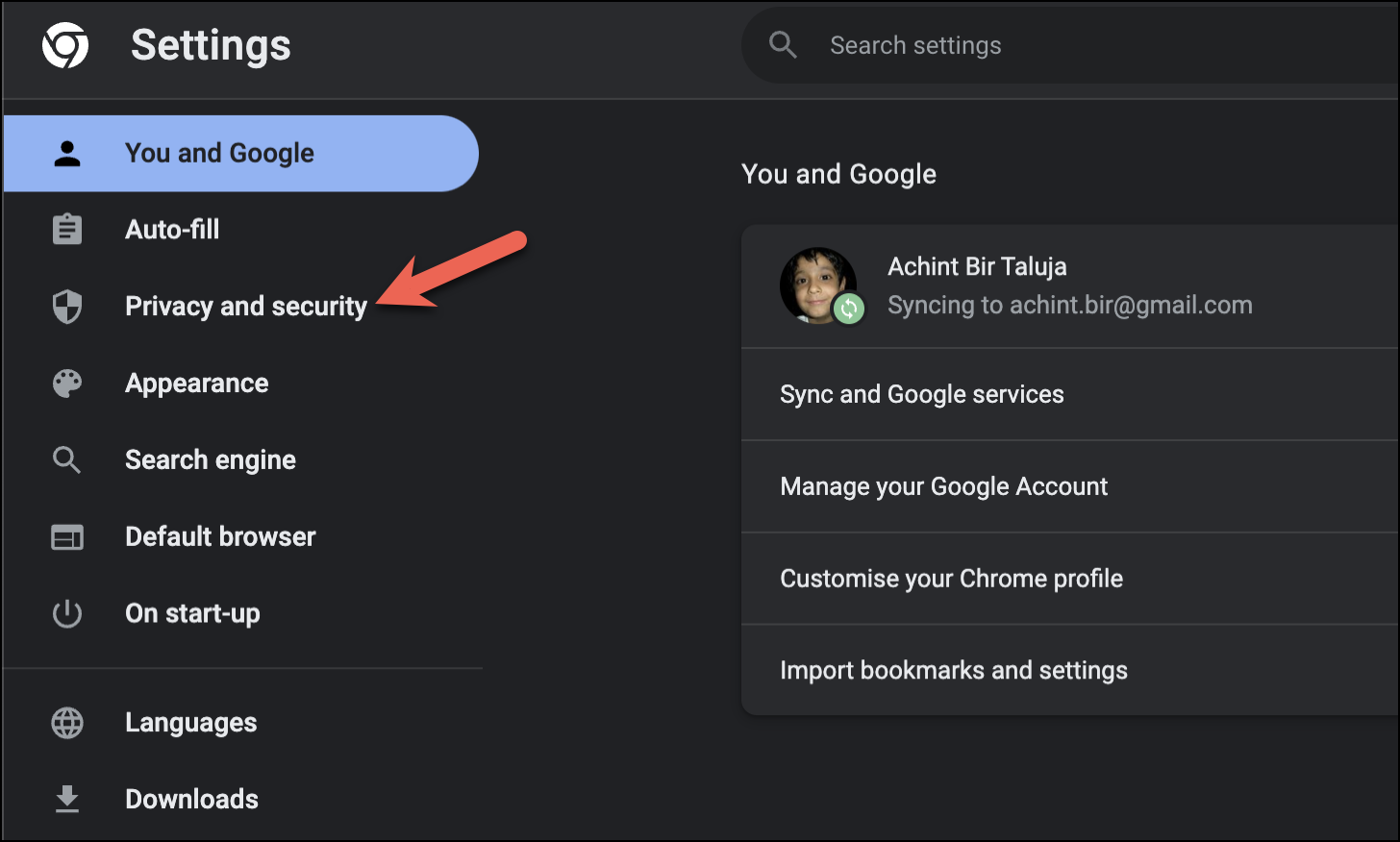
Next, scroll down and click on ‘Site settings’.

Under the Site settings menu, scroll down and under the ‘Content’ section, click on the ‘Pop-ups and redirects’ option.
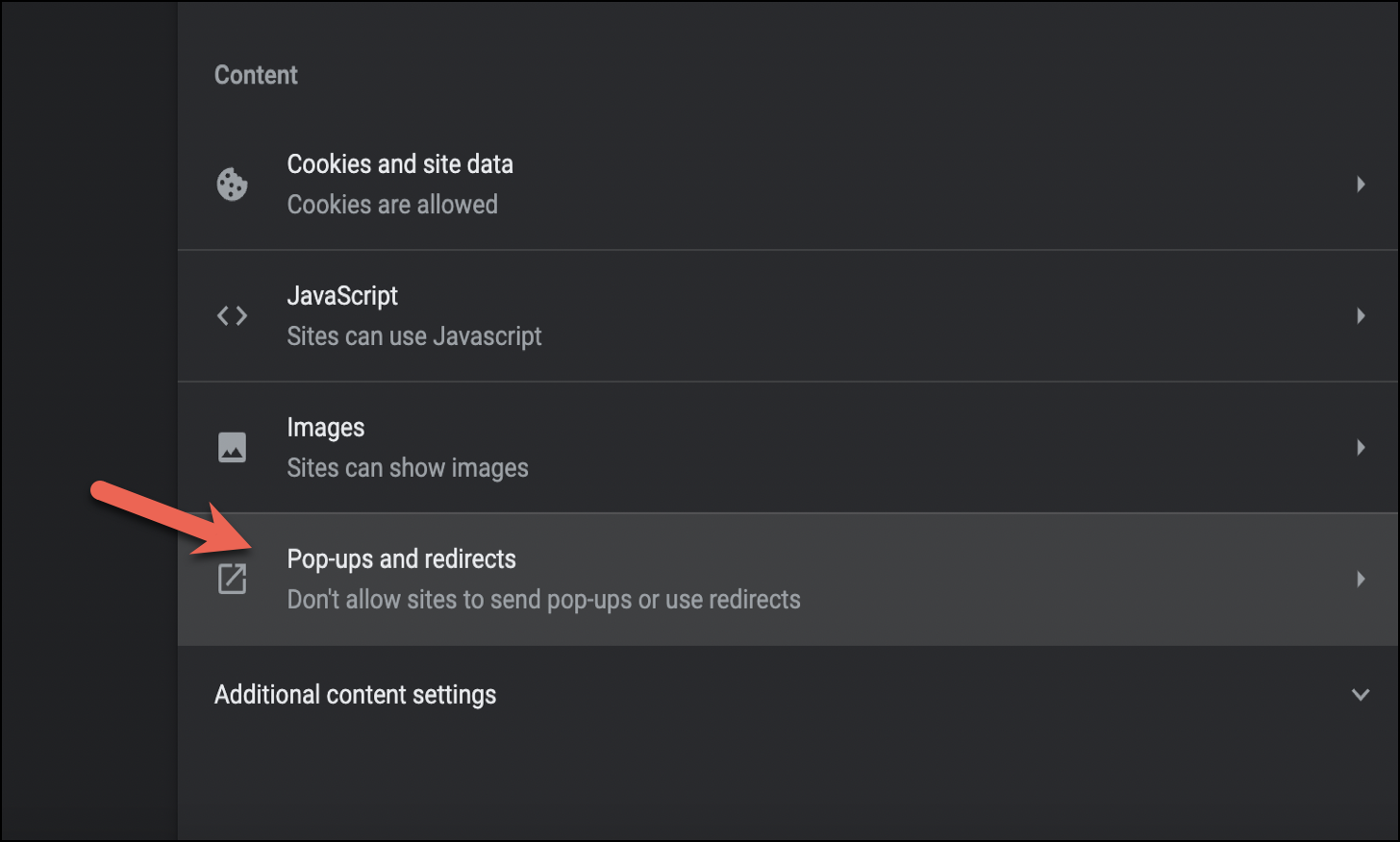
Finally, select the ‘Sites can send pop-ups and use redirects’. This would disable the pop-up blocker and allow websites to show pop-ups.

Additionally, you can customize pop-up settings under the ‘Customised behaviours’ section to allow or block pop-ups on certain websites.
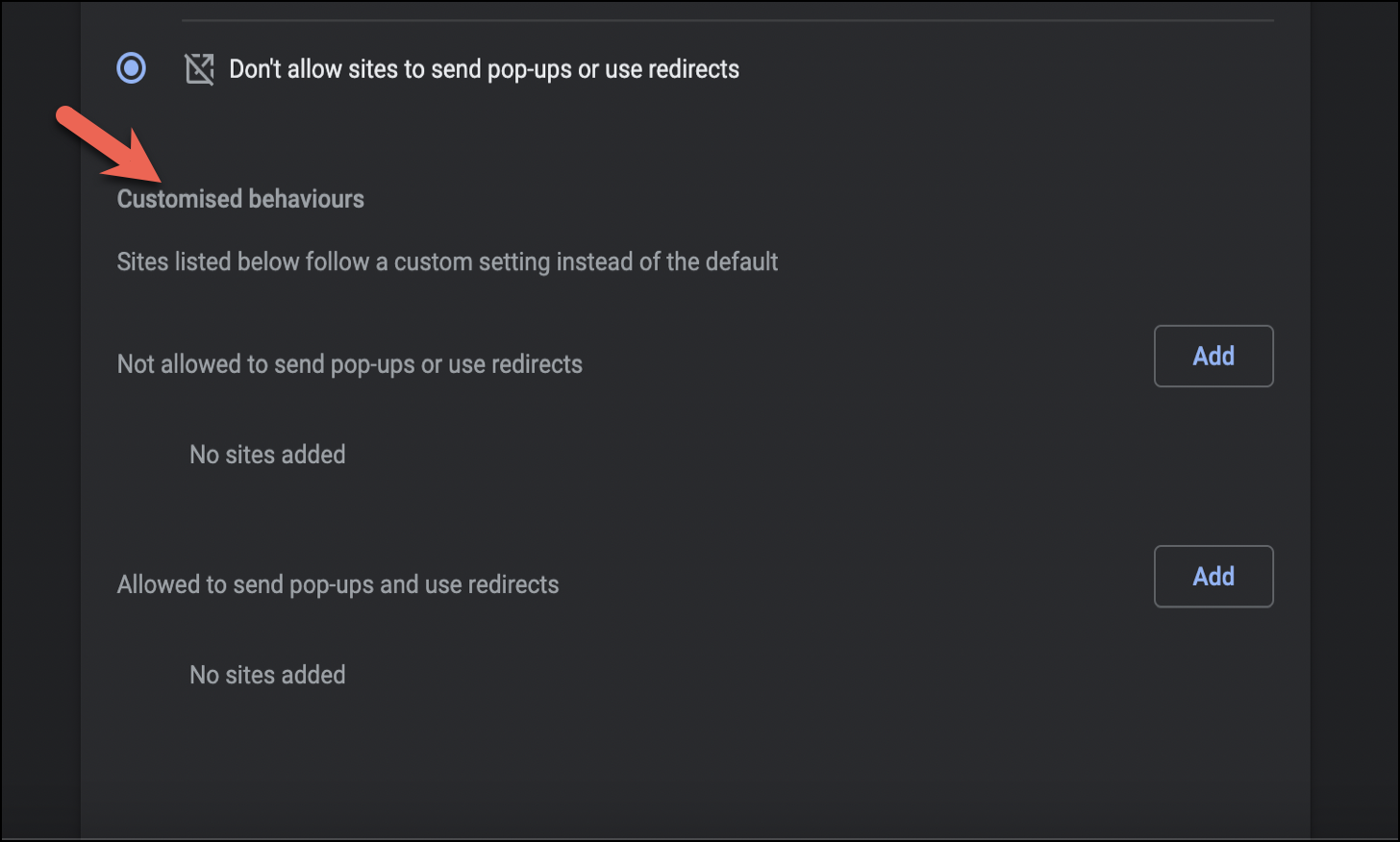
Use the ‘Add’ button under the ‘Not allowed to send pop-ups or use redirects’ option to add specific websites that would be blocked from sending pop-ups and redirects. If you add any websites to this section, the pop-ups will be blocked for them automatically despite your global setting to allow pop-ups.
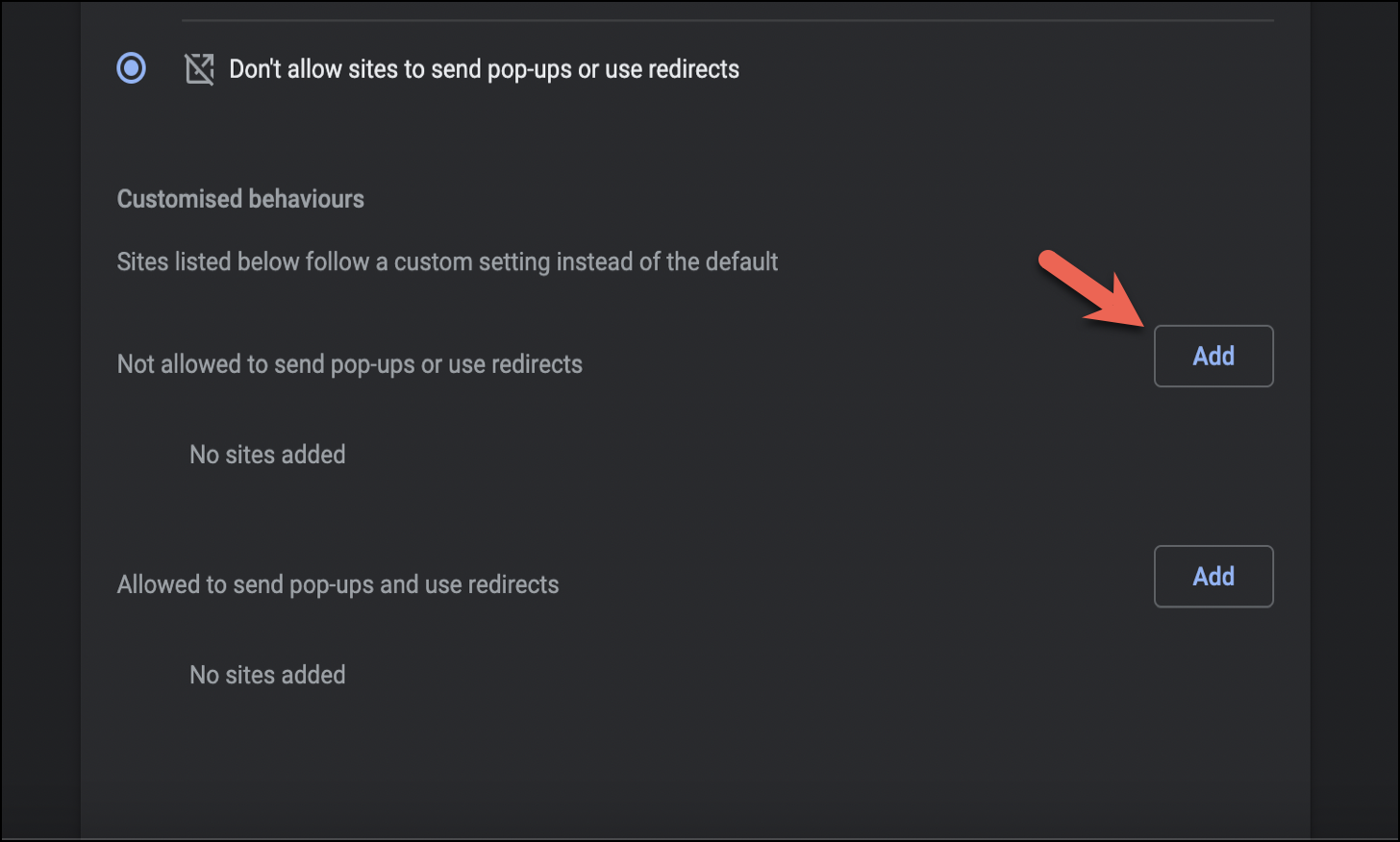
Similarly, use the ‘Add’ button under the ‘Allowed to send pop-ups and use redirects’ option to add specific websites that would be allowed to send pop-ups and redirects. If you’re keeping the global setting to block pop-ups, you can use this option to disable the pop-up blocker on specific websites.

Disable the Pop-up blocker in Safari on Mac
Most apple users swear by Safari as their default browser. It’s majorly due to the amount of convenience that the browser provides to work across your Apple devices. You can easily disable your pop-up blocker in Safari using the instructions mentioned below.
First, launch the Safari browser from Launchpad.
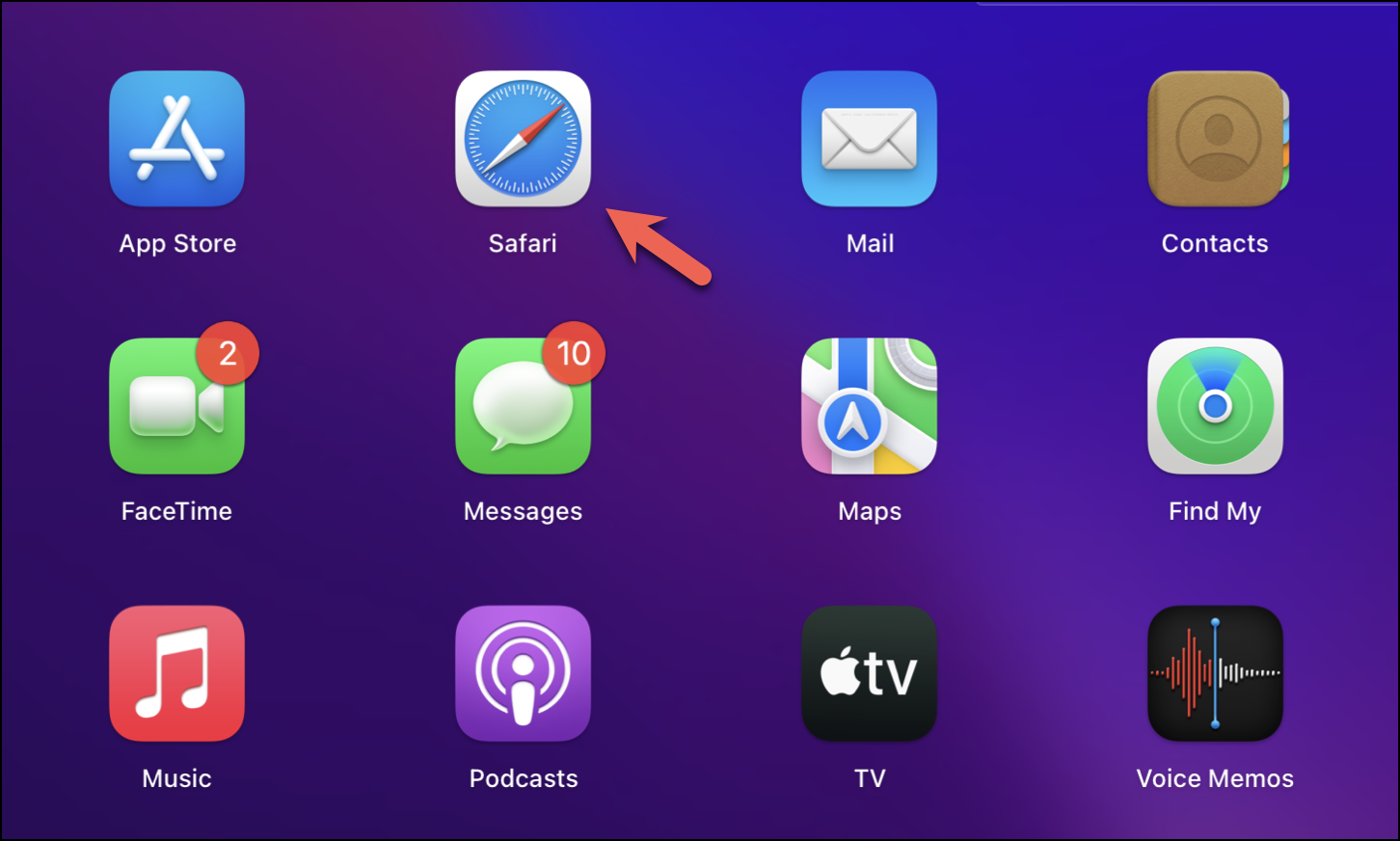
Next, select the ‘Safari’ option from the menu bar.

Now, select the ‘Preferences’ option from the menu.
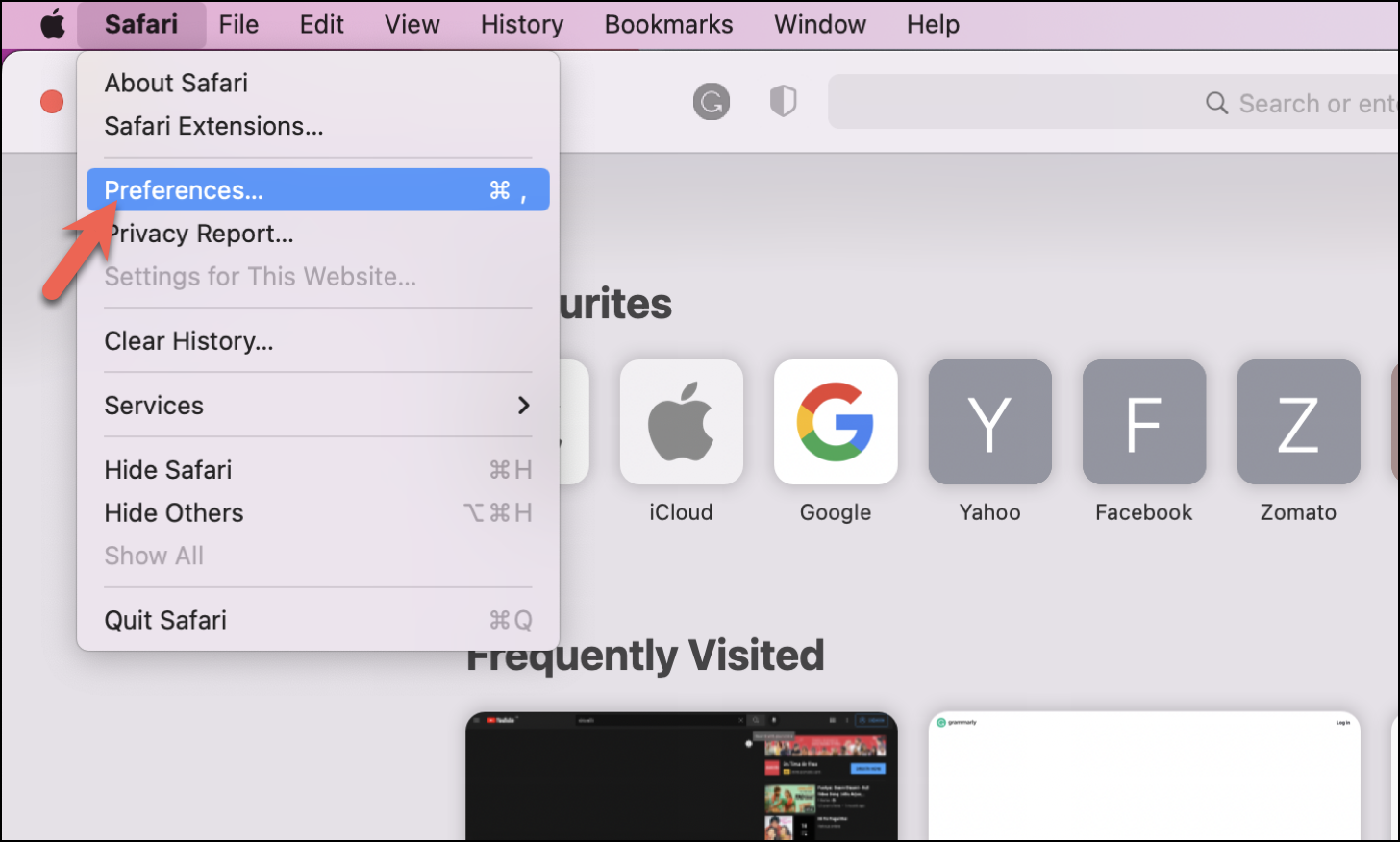
You would see a pop-up window. Select the ‘Websites’ tab.

Now, under the ‘General’ menu, select the ‘Pop-up Windows’ option.

Select ‘Allow’ from the ‘When visiting other websites’ menu.

Congratulations, you have successfully disabled the pop-up blocker on Safari.
To disable the pop-up blocker for specific websites on Safari, go to the Safari preferences when the website is open. That website will appear in the ‘Currently Open Websites’ section.
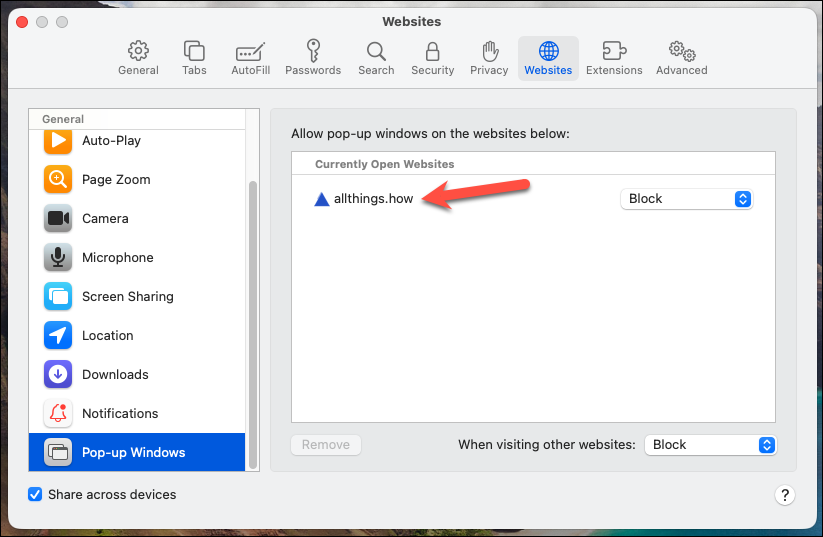
Click the drop-down option next to it and select ‘Allow’ from the menu. This will disable the pop-up blocker and allow pop-ups on the website even if your global setting on Safari is to block the pop-ups.
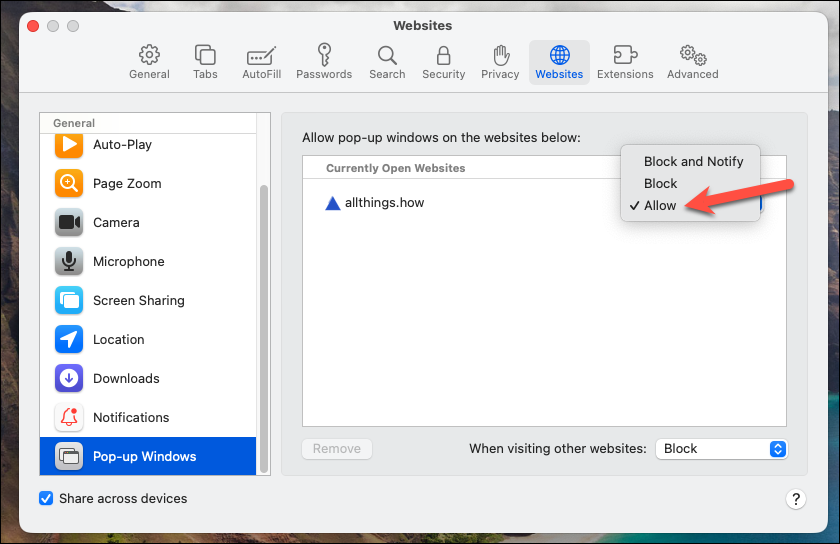
Disable the Pop-up blocker in Microsoft Edge on Mac
Microsoft Edge is another popular browser that many people use. Like other browsers, Microsoft Edge also allows you to disable the pop-up blocker. You can even allow or block pop-ups on specific sites. You can learn about the same by following the instructions mentioned below.
First, launch the Microsoft Edge browser from your Launchpad.
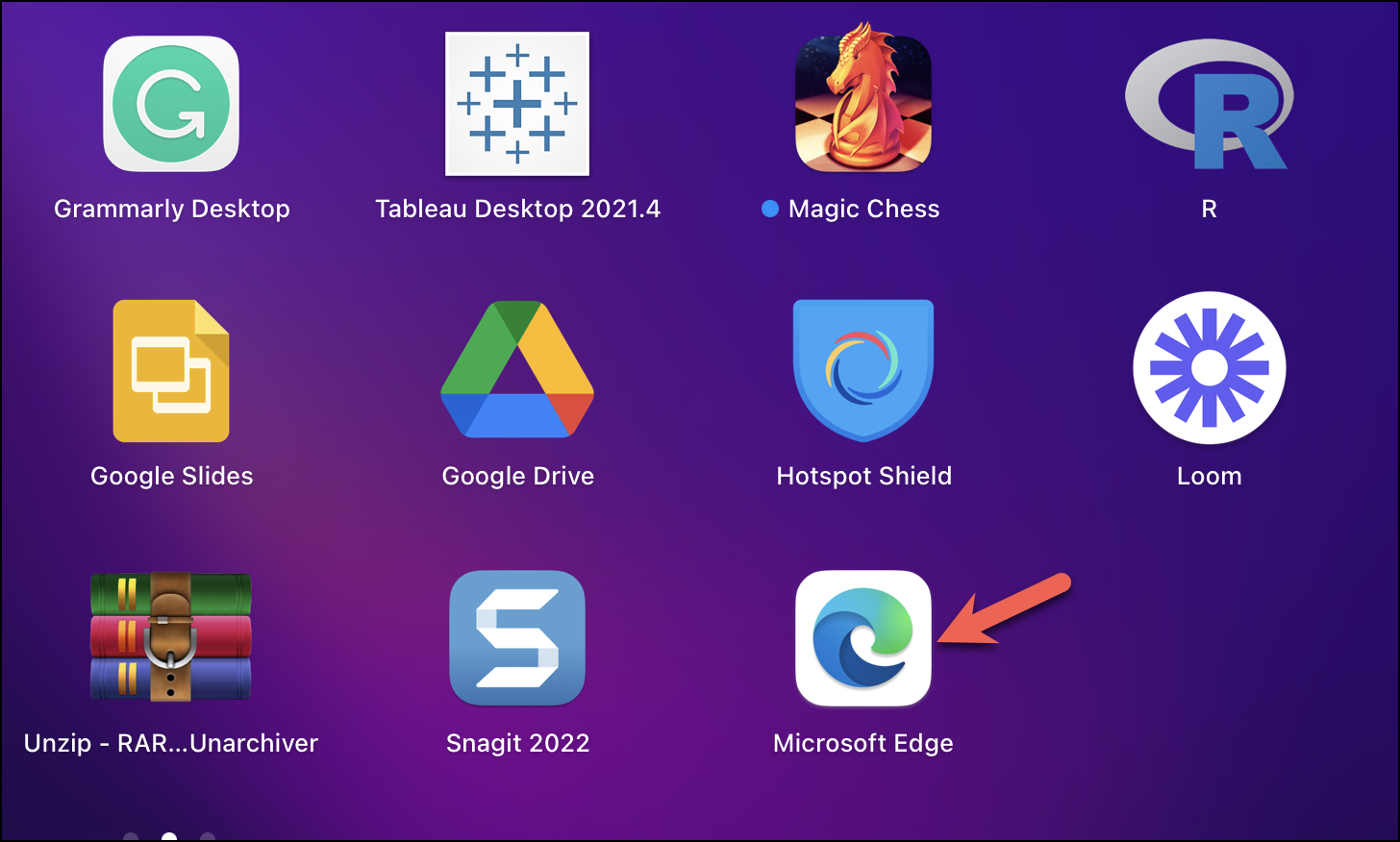
Next, click on the kebab menu, indicated by the three vertical dots in the top-right of your browser window.
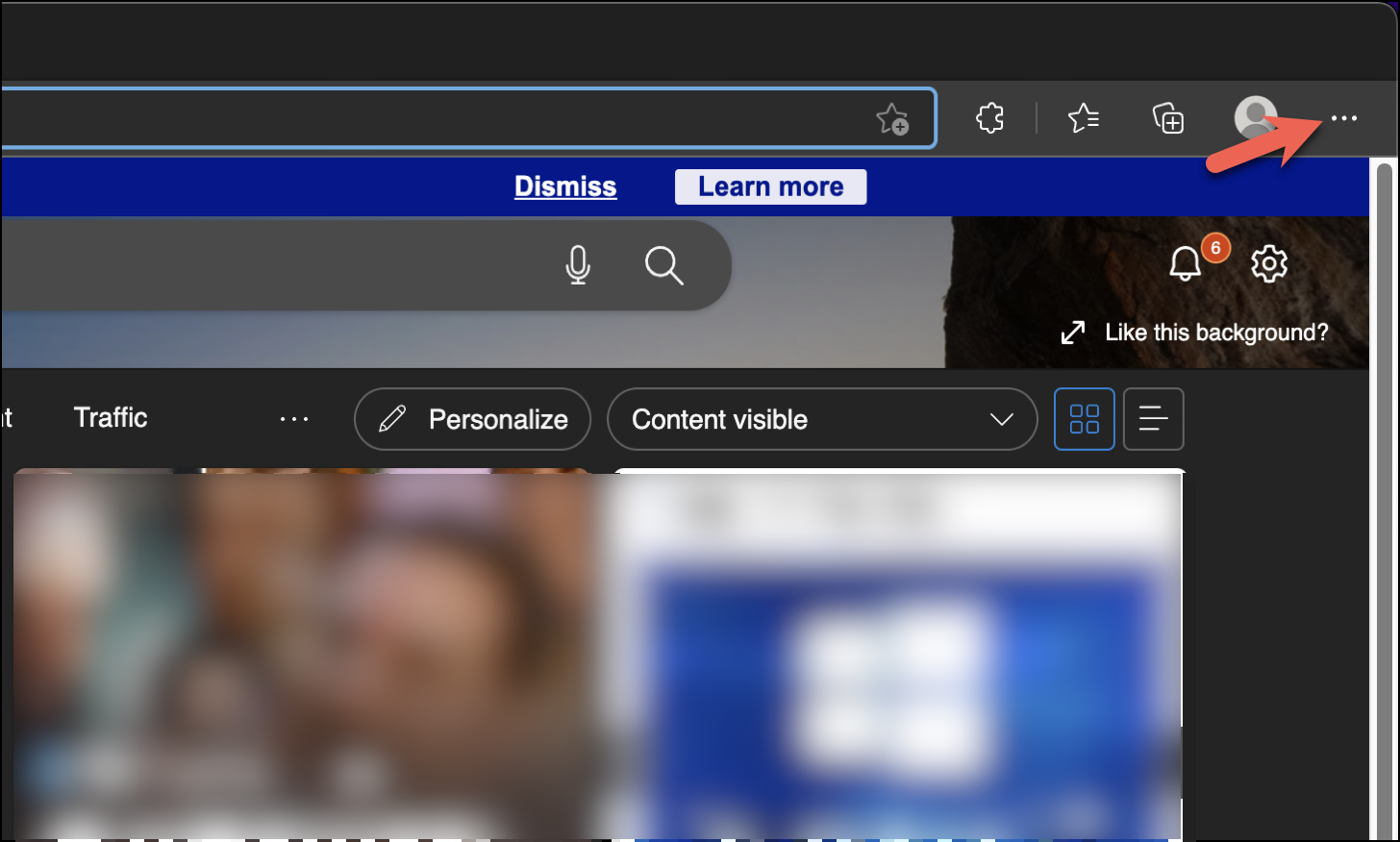
Now, select the ‘Settings’ option.

You would be redirected to the settings tab. Here, select the ‘Cookies and Site Permissions’ from the menu on the left.

Scroll down and click on the ‘Pop-ups and redirects’ option from the right pane.

Finally, toggle the block button to the off position to disable the pop-up blocker.

Additionally, you can block pop-ups on some specific sites by clicking on the ‘Add’ button in the ‘Block’ section. Doing so will block the pop-ups on these websites despite your global setting.

If you wish to keep the pop-ups blocked globally, you can allow specific sites to show pop-ups by clicking on the ‘Add’ button in the ‘Allow’ section. This will disable the pop-up blocker on these particular websites.

This was all you needed to know to disable pop-up blockers on macOS. You can use this feature to allow pop-ups on all or some specific websites where they are necessary. Overall, this would allow you to have a more personalized experience while browsing.

